Christo wrapped buildings in fabric and created art; I wrap boats in tarps and I get what looks like an encampment. When I moved into my home in 1993, I had a lawn surrounding the house, a garage in the basement, a detached garage, and two off-street parking spaces in front. There wasn’t a hint of my boatbuilding habit to be seen. Now, 29 years later, my cars have been exiled to the street, the detached garage has eight boats in it, the other garage is my workshop, the off-street parking is occupied by a canal boat and a Garvey cruiser on their trailers, the east yard has a kayak, the west yard a gunning dory, and the lawn in the back yard is all but covered by a Caledonia yawl, a sneakbox, and a teardrop trailer.
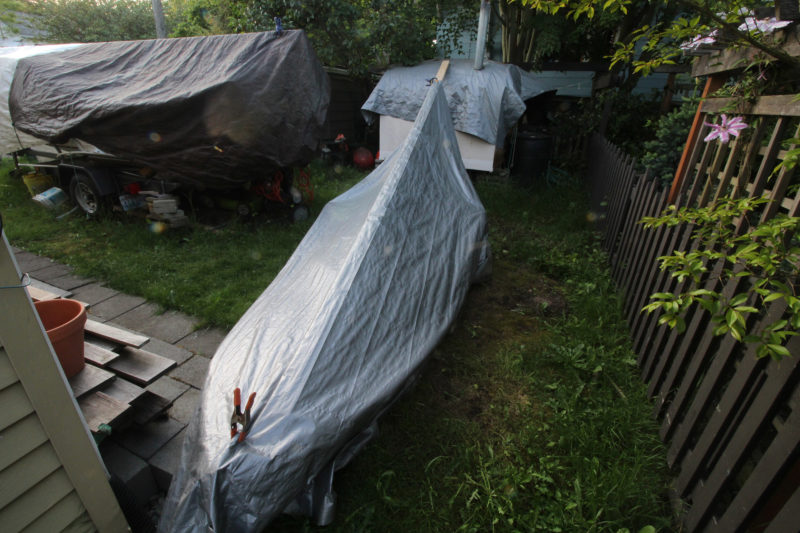
Almost all of the back yard is occupied by the Caledonia Yawl (left), the sneakbox (front), and the house for the cabin of my teardrop trailer (back). The sneakbox and the yawl both have ridgepoles to create some airspace under the tarp. The teardrop’s tarp has a hole for the woodstove’s chimney for warming my retreat on cold days.
Each of those vessels has at least one tarp covering it and unfortunately it’s not a storage system I can turn my back on. In the winter I have to sweep snow off the tarps to keep its weight from tearing them. When it rains, I have to bail the water that gets into the boats from the leaks and pull tight the tarps that have sagged and pooled water. When it’s windy, I have to make the rounds and check the tarps for loose lines. On the plus side, I only have to mow half the lawn that I used to. And crawling under a tarp that’s pulled snug against the hull helps keep me agile and forces me to practice patience. I can squeeze my head under the tarp and scrape my midsection around the gunwale, but my trailing foot always get captured by the edge of the tarp, which inevitably gathers in tight creases at my ankle. I can’t see what’s happening back there, so I just trace circles with my toes until my heel pops free.

The 20′ × 12′ 10-mil tarps I bought for HESPERIA, left, and BONZO, right, started out waterproof, but eventually began to leak.
The two tarps covering the boats in the front of the house have cords connecting the tarp of one boat to the trailer of the other. Making my way along the passage between the boats is like ducking under and stepping over laser beams in a jewelry-heist movie.
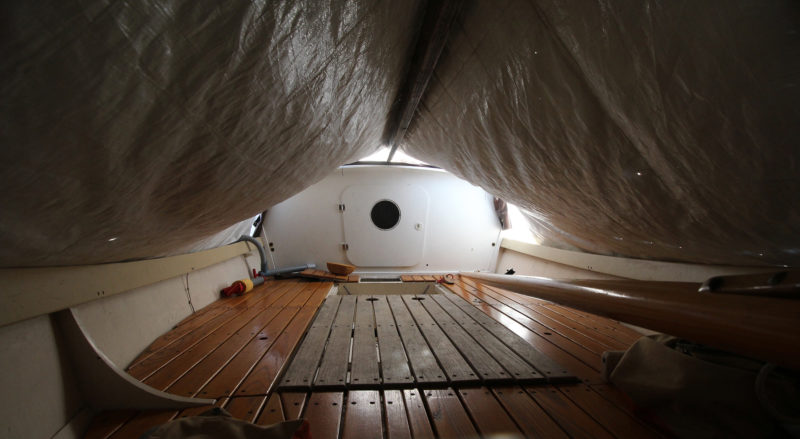
ALISON, my Caledonia yawl, has a tarp that is 3-1/2 years old covering its full length. I added a second tarp to stop the drips coming through, but it only covers half of the boat. I have to crawl aboard to pump out after it rains.
I keep a pump and a sponge aboard each of the boats that collect water, and once I settle into dewatering, I enjoy the time aboard them, especially on warm days when the heat trapped by the tarp brings out the aroma of varnish and enamel.
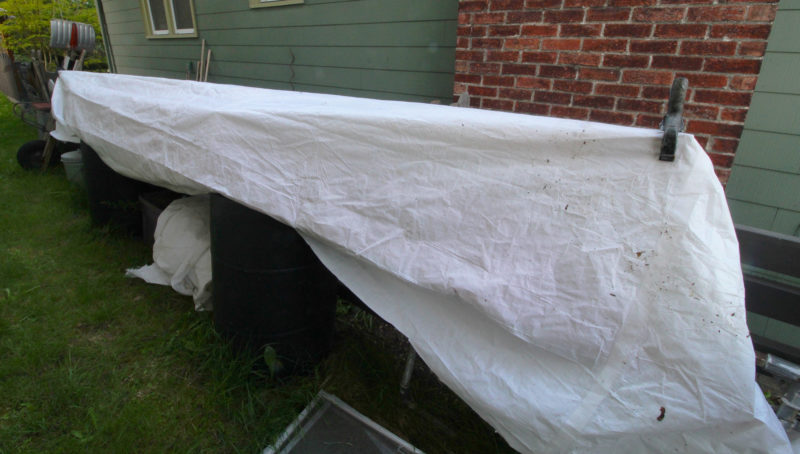
My 18′ plywood Greenland-style kayak has a 16′ 2×4 supported above the hull by plywood brackets. With the hull upside down, any water that gets through runs off.
I used to buy the cheap blue 5-mil poly tarps. They’d hold up for a few months, but they didn’t stand up to a summer of sunlight. In less than 2 years they were letting water through with alacrity and beginning to disintegrate. I left one tarp on well past its useful life and a windstorm tore it apart and scattered pale-blue plastic confetti flakes and streamers across the sidewalk and up the street. I spent nearly an hour sweeping it all up.
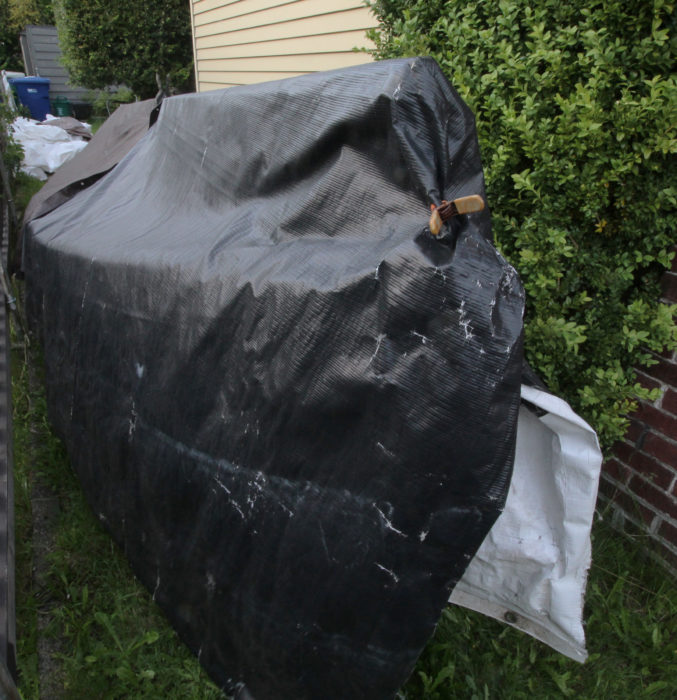
The gunning dory I built for my dad in 1983 is covered by two tarps. The black one is the back side to a piece I cut from a vinyl billboard. The dory is kept at an angle that lets water flow to the stern and then out the drain there.
I now use 10-mil tarps, and after 3-1/2 years the two oldest of them have begun to leak, but they’re not yet falling apart. The most durable tarps I had covering my boats came from a 48′×14′ 12-mil vinyl billboard for Coors Light Beer. I found it neatly folded and abandoned by the side of the road. It was so heavy I could barely lift it. I spread it out on the less trafficked side street at home and cut it into pieces to fit the boats. The section for the canal boat had on it FRESHM—six letters from “refreshment”—printed so large it could be read in satellite photographs on Google Earth. Eventually, even those tarps grew brittle with prolonged exposure to sunlight and their coating cracked and leaked.
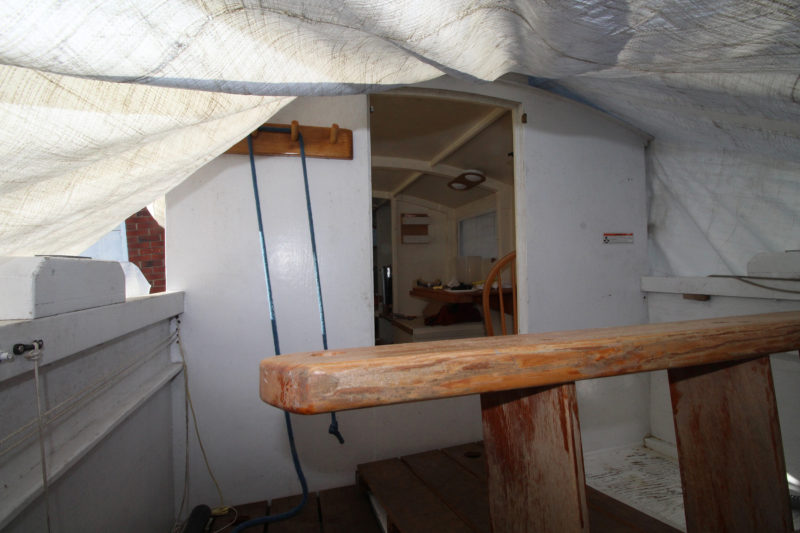
The cockpit of the Escargot canal boat can take on about a gallon of water during a heavy rainfall. I keep a pump and a sponge handy to get it out. It puddles in the corner at right, and I leave the floorboard out to get access with the hand pump.
Until I move out of the city to farm country where I’d have outbuildings or a barn for my boats, I’m stuck taking care of my tarps. I suppose it’s like owning dogs. I see neighbors walking their dogs and tidying up after them every day, year after year, and they don’t seem to mind the demand on their time and attention. The difference is that tarps are outdoor pets, and they never seem happy to see me.![]()

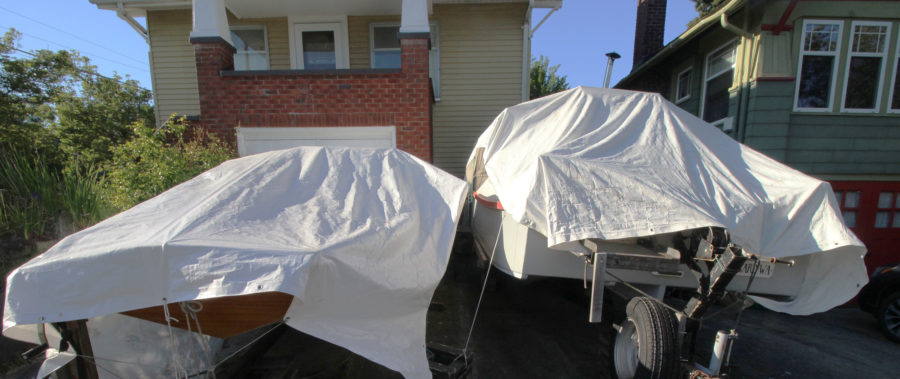
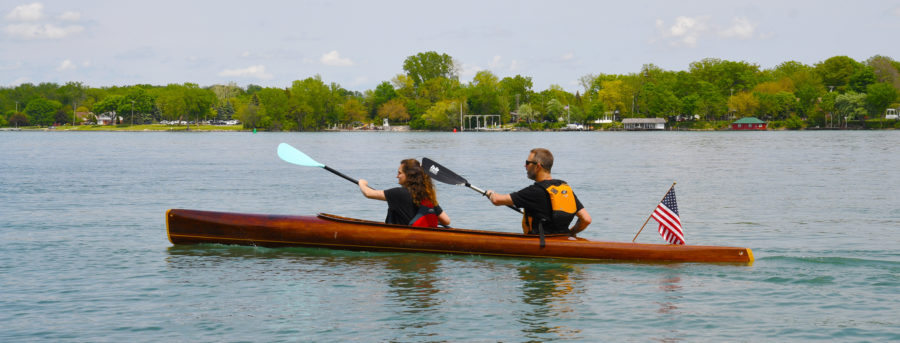
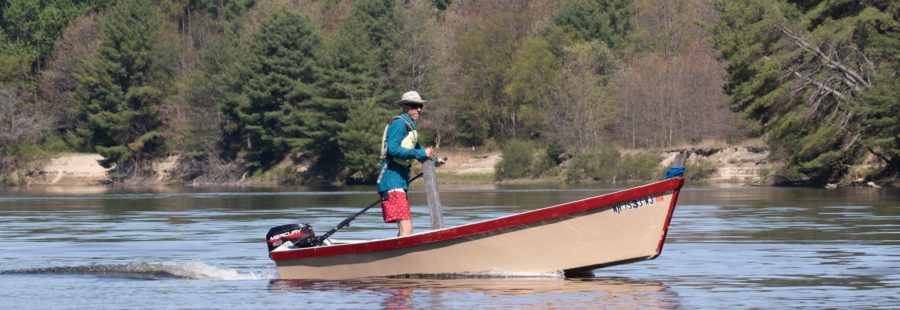
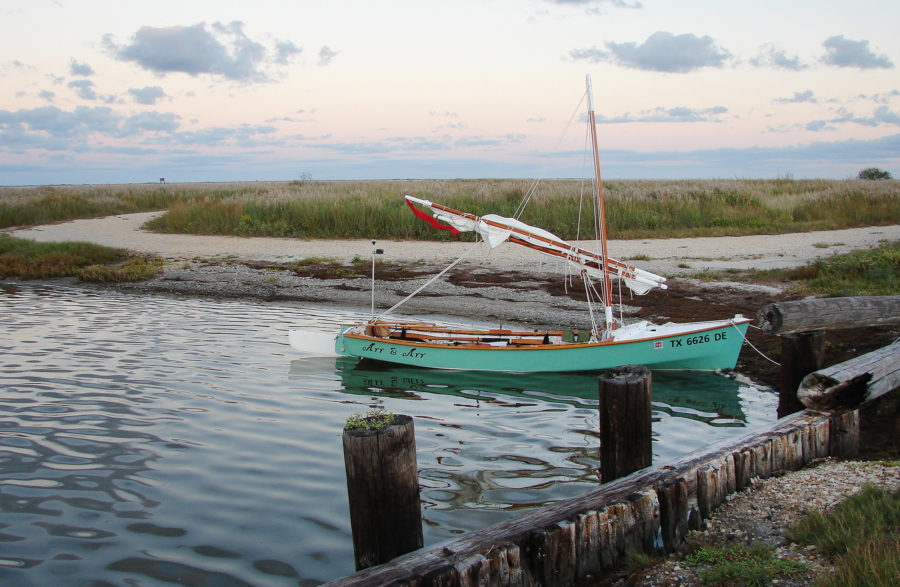
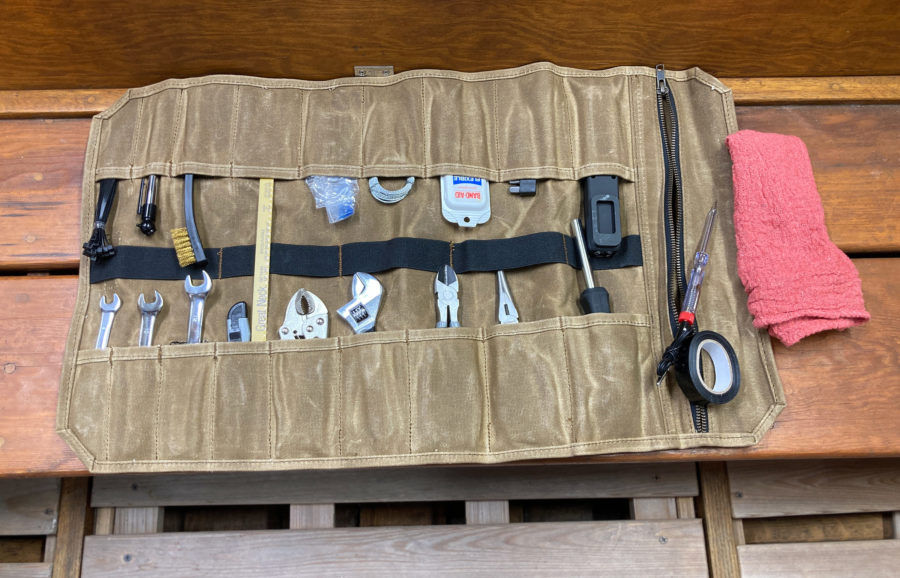
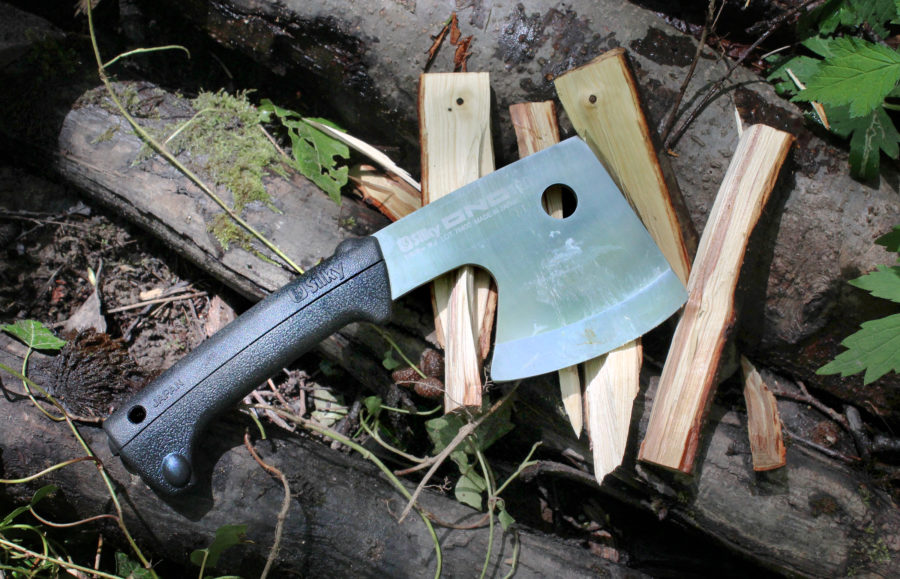
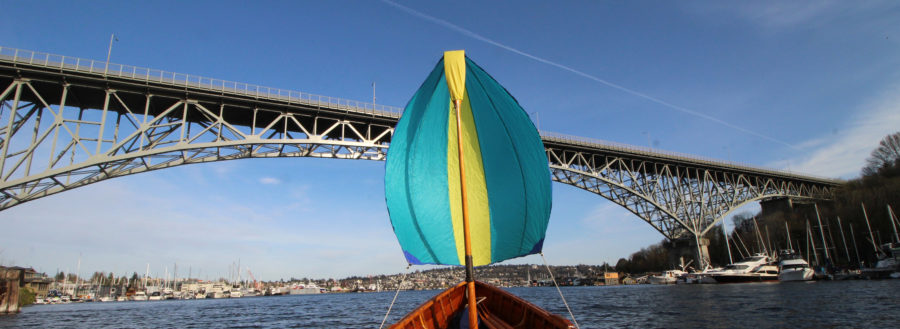
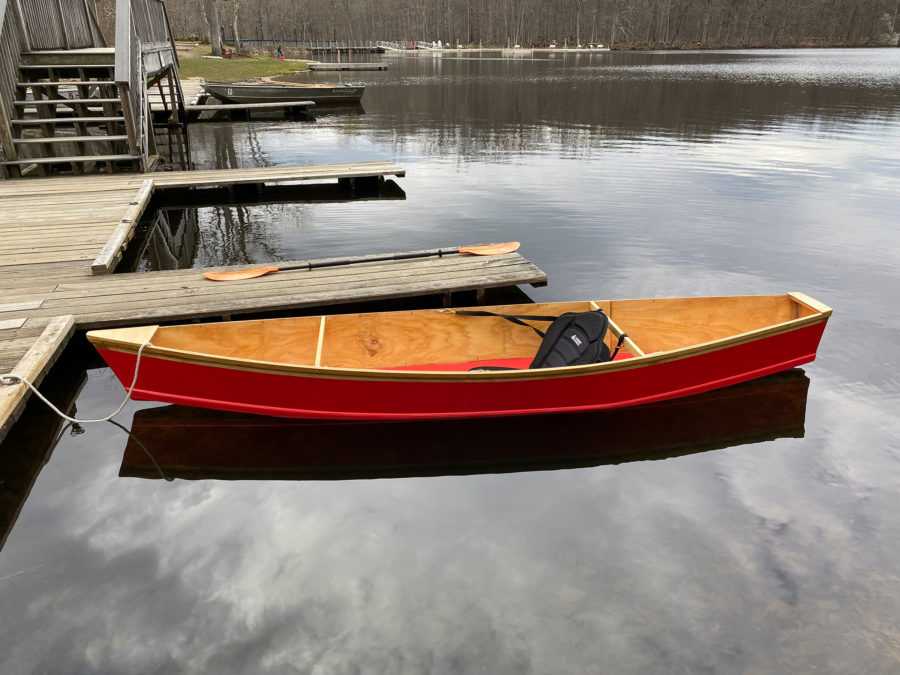
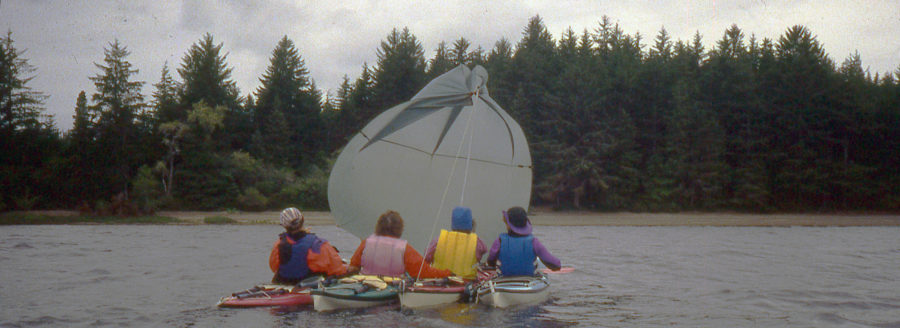
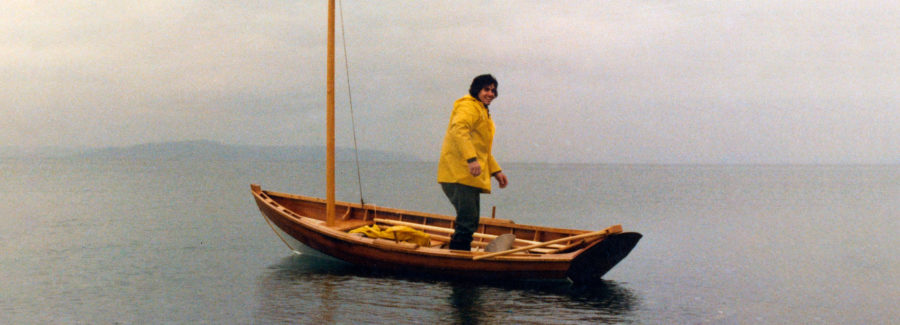

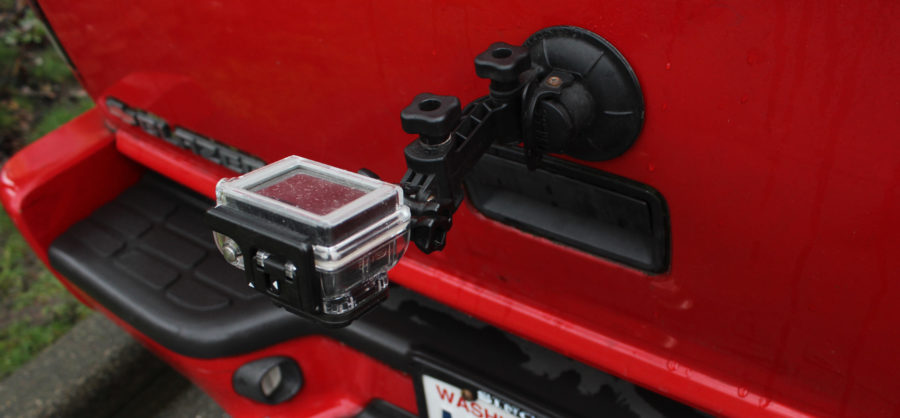
When I built my bow roof shop, I covered it with 7 mil shrink wrap, and shrank the bottom four feet only, which tightened It up sufficiently that it didn’t flop in the wind. It lasted 13 years. It is a bit spendy now, around $300 for 1728 sq. ft. rolls. It is UV protected.
Another option would be to make or purchase covers made from Sunbrella or Top Gun fabric. If you want to make your own SailRite has the materials, if you want to purchase there are many options such as SLO Sail and Canvas and others. These covers will last for years, won’t pool water or flap as they are fitted snugly with tie downs.
Here in the winter snow land the recommendation is (first heard in the ’70s) that you must get the tarp away from boat with some structure to prevent mold and rot and get the boat naturally ventilated by wind to remove the moisture that will get there whatever you do. Might be different weather conditions in your corner of the world. Also gives you room to do some work on the boat.
I had a custom-made cover manufactured for my dory in heavy duty canvas-like material which is completely waterproof. To prevent pooling of rainwater I shaped two curved (laminated) battens which rest on the gunwales. Not perfect but adequate.
I bought a 1973 20′ Simmons Sea Skiff last fall and sewed up a Sunbrella cover for it with a draw string and loops for bungees; I draped it over a 1-1/4″ PVC pipe raised at the console. Turns out the bungees aren’t needed when it is sitting in the yard. No leaks, no flapping, no pooling. Making it was interesting and easier than building a boat. The last cover I made of Sunbrella lasted about 15 years in the SC sun.
I go to my local awning maker, and purchase vinyl covered fabric used for truck tarps and awnings. I have the awning maker sew a hem around the edge and install brass grommets every 4 feet. I’m on my third cover for my Acorn Dinghy in 38 years located in the Northeast. I placed a 2 x 6 for a ridge pole from stem to stern, and tension the cover with bungee cords to the trailer. This keeps rain from pooling and snow slides right off.
Your boats are beautiful. When you consider the amount of time and money invested in building and maintaining the boats, would it not be prudent to invest a little extra and good quality custom boat tarps that last 15 to 20 years or so? The cost of one tarp would easily be offset by the multiple tarps and labor necessary to keep the boats clean and dry over the same time & provide more time to enjoy your boats.
Thank you editors for running this story. For once, we have a totally realistic and simple solution to the worldwide problem of covering boats on the hard.
I understand the suggestions of the ‘perfect cover,’ but most of us out here are just average humans who need to get the task done quickly, easily, and cheaply.
I adore seeing and reading the solutions of this sailor, and my boats rest comfortably under likewise plastic tarps. My 11′ Whitehall is now going on 50 and in fine shape after 50 northeast winters and a batch of plastic tarps.
Keep calm and carry on.
I found that unless I kept the tie-down lines very taut, I would always see ponding and, inevitably, leaking. One November, a day after election day, I walked to a fence in the neighborhood that served as a giant bulletin board for political signs. I cut down the biggest plastic sign, folded it and carried it home. Draped over the mast, under the tarp, it is stiff enough to support the tarp. In addition, when I replace the tarp every couple of years, the old tarp goes on top of the new one. The old tarp then absorbs most of the slings and arrows of falling debris and curious cats.
For boats with oarlock sockets it’s easy to make bow tarp supports with 1/2″ PVC pipe and 1/2″ OD dowels or rod. A ridge pole can be line-tied between them then to bow and stern tightly. If a hold-down is needed on tarps and there is no lashing spot a gallon water-filled jug works fine.